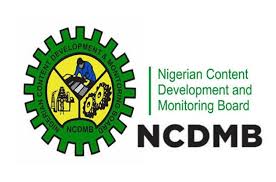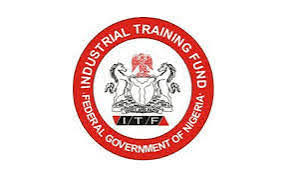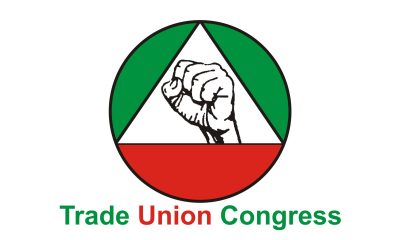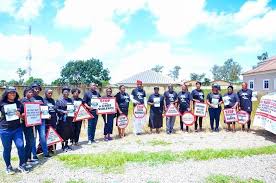Opinion
IOCs Divestments: Window For Resource Control
The current wind of divestments blowing across the Nigerian Oil and Gas industry will benefit a lot of people. In the first instance, it will foster the acceleration and indigenisation of the Oil and Gas value chain of the country. It would also speed up local content development in oil servicing capacity and manpower.
Secondly, and most importantly, most of the petrol dollars generated will remain in the country to boost our wiggling forex supply.
Unfortunately, the indigenous companies taking over these assets must have to grapple with most of the challenges that have for sometime bedeviled the sector, both locally and internationally. Challenges such as the international drought of investors, occasioned by global energy transition trends; insecurity, community restiveness, aging assets and pipeline vandalism.
The history of International Oil Companies’ (IOCs’) divestments dates back to 1991, during the regime of military Head of State, Ibrahim Babangida. It was facilitated by Prof Jubril Aminu, leading to the emergence of Muhammadu Indimi’s Oriental Energy as acquirers of Oil Prospecting Licenses (OPL) 124 and Mike Adenuga’s Conoil acquiring OPL 113. The next signpost activity that brought in local players into the industry was the sale of mining licenses for marginal field in 2001. However, the next major wave of divestments occurred between 2010 to 2014. This wave ushered in big industry players like Seplant, Oando and others, culminating in the acquisition of 12 Oil Mining Licenses (OMLs) amounting to $6.4 billion.
So far, a roll call of all the indigenous companies, both those who are the original owners of their mining licenses and those who acquired divested OMLs shows that, aside from Delta State, all other Niger Delta states are underrepresented. For instance, the major name associated with Aiteo is Benetict Peters, from Ebonyi State; Dr. ABC Orijako, from Anambra State, is the co-founder of Seplant. OML 60, 61, 62 and 63 were acquired by Oando Energy Resources, yet I am not aware of any state, or individuals from the Niger Delta owning controlling shares.
Since 2015, divestments have continued, but 2021 saw a major uptick in divestments activities, leading to what is arguably the largest divestments in the Nigerian Oil and Gas industry, with Tony Elumelu’s TNOG Oil and Gas Limited acquiring 45 per cent stake of OML 17 owned by Shell , Total and Eni. The current production output of OML 17 is pegged at 27,000 BPD. While Mobil Producing Nigerian Unlimited (MPNU) is divesting all its assets, both oil and gas fields to Seplant, a wholly owned Nigerian company, listed both in London and Nigerian Stock Exchange.
Given the amount of agitation over resource control in the past, and very recently, over the the Petroleum Industry Act, one should think that our agitation would have transitioned to capacity building in order to fully participate in the ongoing divestments of OMLs within our domain.
It is indeed a shame that from my observation so far, core oil producing states and communities have taken the role of onlookers. I am very sure that the Federal Government did not bar Niger Deltans from preparing in advance for a time like this.
People in the Niger Delta seem to have acquiesced to a new status quo, where people are allowed to vandalize pipe lines and siphon crude for illegal refining sites, in spite of the monumental damage it is inflicting on forests, swamps, creeks and rivers, destroying means of livelihoods in the process.
Recently, the Managing Director of NNPC, Mele Kyari, announced that a policy is being put in place to guide the current wave of divestments to ensure that stem issues regarding assets decommissioning and abandonment.
Unfortunately, states in the Niger Delta seem oblivious to the trends, because I am yet to hear or read about any such policy statements from any state in the region. The only action is the case of Akwa Ibom State and Mobil; which is reactionary. In my considered opinion, Niger Delta is being left out by choice.
In the past, the only hope in local content development rising from the core Niger Delta was Monipulo, but since the demise of its founder, High Chief, Dr. O B Lulu Briggs, so much has not been heard of the company; especially as it concerns expansion and in playing a major role in this current wave of divestments.
Speaking in an event recently, the MD NNPC, Mele Kyari stated very clearly the intention of the Federal Government is to ensure that every divestment is made in such a way that it protects the interest of the country. He cited issues of capacity, competence and investment as necessary criterion for okaying any deal. This is good, but it does not in any way assuage my apprehension that the Niger Delta would receive the left foot.
Is there something we are not being told? Or, are we as Niger Deltans being given the short end of the stick again? Since the noise of this current IOCs divestments started sounding louder, I am yet to hear any of our big names, Edwin Clark, or any other notable names comment on it. Neither has the Ijaw National Congress or any group in the Niger Delta commented on the fact that a good number of the oil fields in our region is being divested from the IOCs to indigenous companies in which Niger Deltans might not have a major shares.
Another area that is shocking to me is that states in the Niger Delta, especially, Rivers, Akwa Ibom, Bayelsa and Delta are still unable to setup oil and gas producing companies of their own, individually; or create a special purpose vehicle for this laudable endeavour. How come in this day and age, after all we have been through as a people, we are still unable to get our act together and take those steps that will improve the wealth of our people?
Former President Obasanjo raised some dust, not too long ago, when he commented that the oil and gas in the Niger Delta belongs to the Nigerian state. As a lay man I struggle to understand how the governor of a state controls the land, but the FG is in charge of what is under; but this is the reality in the Niger Delta, even though no one has given us a clear idea as to how the revenue accruing from all the gold mined in Zamfara is shared. Unfortunately, it is what it is, and there is nothing we can do about it unless a semblance of balance is created in the the National Assembly.
As a keen observer, I am aware of the impact a company like Minipulo has made across the Niger Delta and the country at large. Here is an indigenous Niger Delta company, operating in the Niger Delta, paying its due to the Federal Government and serving its people.
By: Raphael Pepple
Opinion
Let The Poor Breathe
In the history of our nation, only petroleum products have suffered more incessant increments in prices than electricity supply in all public products and services. Unfortunately, those are the two main things that impact mostly on our lives and national economy. While the increment in petroleum products’ prices is always attributed to the price of crude oil at the international market and the need to curb the scarcity by encouraging the supply, the increment in the electricity tariff has never had any justifiable reason and no service improvement afterwards. In fact, the electricity supply has gone far worse now that the tariff has gone up by over 300 percent. One of the underlying reasons for the planned electricity subsidy removal as unconsciously relayed by the Minister of Power on TVC News is the sabotage of the system by those collecting the subsidy money to maintain the assets. He said: “These are assets that we spend the country’s money on, and our brothers deliberately sabotage them. So, you can see that some people are hiding somewhere that do not want this sector to work”.
Just as the petroleum subsidy must go because the government is too impotent to handle the petroleum subsidy racketeers, the electricity subsidy has to also go at the expense of the poor masses and no one has been prosecuted for it.
When the oligarchs rob us blind, the poor masses are made to pay. The only tool that seems to be at the disposal of this government for the combat of economic challenges brought by the corruption of the political elites is to make the poor masses suffer deprivations.
No doubt, stopping the monkeys from the banana plantation is a Herculean task. But those with their thinking caps on will not need to destroy the banana plantation to ward off the monkeys. The Federal Government has taken several decisions in the last one year that are akin to milking the debilitated cow to feed the virile buffalo. The electricity tariff now has to go up to make more money for the oligarchs that sold our collective heritage to themselves and have been taking money from us for next-to-nothing service delivery.In order to win the supports of the poor masses of Nigeria, the tariff was classified and made to seem like it isn’t going to affect the poor, while the poor will invariably be the worse for it. Most of those on Band A electricity tariff, who are to be paying very exorbitantly for electricity are companies producing most of our consumables and utility items. With the high cost of electricity, the production cost will go high and consequently, the cost of the products. By the time the effects of the new electricity tariffs take full manifestation, almost everything that can make life meaningful will be beyond the purchasing powers of most Nigerians.
I can not help but to wonder what exactly is left for us to benefit as citizens of this country. Nigeria is rapidly moving towards a capitalist nation, where everything is commercialised and profit at the expense of the citizens is the priority. Medicare and even public education are now being run for profit. The government goes about with the shenanigans of education for all, while it is making education unaffordable to most Nigerians. Even the students’ loan, as badly conceived as it is, is also with interest. Those who have been in power since our democratic dispensation belong to that generation of Nigerians that the nation had been very benevolent to. They were educated for free, got paid salaries as students and given jobs on a platter after graduation. This generation of people got everything from Nigeria and unfortunately have refused to give anything back. They have not only been ungrateful to Nigeria; they have also systematically run the country aground. What a waste of investment Nigeria has made in them! While some countries in this same Africa hardly experience power outage in a year, our own B and A category would at best experience four hours of power outage in a day. These are the ruins they have led our country to in 21st century.
The timing and manner that these anti-welfare policies were introduced are indicative of lack of concern for the citizens of this country. A lot of Nigerians have lost their lives in choking circumstances. Please, let the poor breathe! While trying to rebuild Nigeria, the poor masses should not be made to feel like the eggs in the preparation of omelette. It is very obvious that you do not care about how many eggs are broken, so long as you can have the hen.
Abdulrasheed Rabana
Rabana, is a public affairs analyst .
Opinion
The Nigerian Police We Want
At the maiden edition of the Nigeria Police Awards and Commendations ceremony in Abuja recently, President Bola Tinubu, declared the first week of April as Police Week and the last day of the week as National Police Day. He stressed the need to engage men and women of the force in training and capacity-building to equip them with the expertise required to carry out the arduous task of modern policing.
These, according to him, are part of his administration’s ongoing bid to transform the Nigeria Police Force (NPF) into a modern, professional and accountable institution.
Over the years, Nigeria has grappled with numerous challenges in various sectors, but perhaps none as glaring and urgent as the need for police reform.
The Nigerian Police Force, tasked with maintaining law and order, has often fallen short of public expectations, marred by allegations of corruption, brutality, and inefficiency. Corruption within the NPF remains a pervasive issue, undermining public trust and confidence in law enforcement. Cases of bribery, extortion, and abuse of power by police officers are not uncommon, perpetuating a culture of impunity and eroding the legitimacy of the institution.
At the police event mentioned earlier, the Chairman of the Police Service Commission and former IGP, Solomon Arase, advocated an improved welfare package for men and women of the NPF, noting that enhanced wellbeing of the personnel would improve their overall performance in securing lives and property. He just hit the hammer on the nail. Police officers in Nigeria often work in challenging and dangerous environments, with long hours and minimal compensation. The poor working and living conditions has been a topic for discussion both in the media and other gatherings for many years. Low salaries, limited access to healthcare and other welfare benefits have continued to be an issue. Government after government promise to tackle the challenges yet the situation remains unchanged
The NPF suffers from chronic underfunding, which limits its capacity to procure essential equipment, maintain infrastructure, and provide adequate logistical support to officers. As a result, many police stations are poorly equipped, with outdated technology and inadequate resources to respond to emergencies promptly.
What about the issue of inadequate training and capacity building? Many police officers in the country lack sufficient training and skills to effectively carry out their duties. The quality of training facilities and curriculum is often substandard, leading to deficiencies in areas such as investigative techniques, human rights awareness, and community policing strategies.
The NPF is susceptible to political interference, with politicians exerting influence over appointments, promotions, and operational decisions. This interference undermines the independence and professionalism of the force, compromising its ability to enforce the law impartially.
During a recent visit to the president by members of the Afenifere Cultural group, the former Secretary to the Government of the Federation, Chief Olu Falae, asked President Tinubu to look into the command structure of federal security agencies to ensure equity in the posting and deployment of senior officers, advising that equity should also be reflected in the recruitment of security personnel from the bottom up.
A situation where the NPF and other security agencies seem to be dominated by people from certain parts of the country, certain ethnic groups does not show that Nigeria is committed to the implementation of the federal character as enshrined in the constitution. This no doubt contributes to the low morale and high attrition rates within the force.
Moreover, the legal framework governing the operations of the NPF is outdated and inadequate, leading to ambiguities in police powers and procedures. The lack of effective judicial oversight mechanisms to hold police officers accountable for misconduct and abuse of power is no longer news.
What about the problem of Security Threats and Insurgency? The NPF is tasked with addressing a wide range of security threats, including terrorism, kidnapping, armed robbery, and communal clashes. Many policemen have lost their lives in the unending insecurity challenges across the country.
These myriads of challenges that hinder the Nigerian Police’s ability to effectively fulfil its mandate of maintaining law and order, protecting lives and property, and upholding the rule of law should be prioritised over setting aside one week of celebration for the police.
To achieve the ambitious goal of transforming the Nigerian Police into “a modern, professional, and accountable institution that mirrors the aspirations and values” of Nigeria, several key areas must be addressed comprehensively.
Professionalisation and training: One of the fundamental pillars of a better police force is the professionalisation of its personnel. This entails rigorous recruitment processes, comprehensive training programmes, and continuous education to equip officers with the necessary skills and knowledge to perform their duties effectively and ethically. Investing in state-of-the-art training facilities and partnering with reputable institutions can elevate the calibre of officers and instil a culture of professionalism and accountability.
Community policing and engagement: Effective policing goes beyond law enforcement; it requires building trust and collaboration within communities. Embracing community policing strategies that involve residents in decision-making processes, problem-solving, and crime prevention efforts can foster a sense of ownership and cooperation. By actively engaging with the people they serve, police officers can gain valuable insights, identify local priorities, and tailor their approach to address specific needs, thereby enhancing public safety and community resilience.
Accountability and transparency: Accountability is the cornerstone of any credible institution, and the Nigerian Police Force is no exception. Implementing robust mechanisms to hold officers accountable for their actions, including misconduct and abuse of power, is essential to restore public confidence and integrity. This involves establishing independent oversight bodies, such as civilian review boards, to investigate complaints impartially and ensure transparency in disciplinary proceedings. Additionally, leveraging technology, such as body cameras and digital records management systems can enhance transparency and facilitate the monitoring of police activities.
Adequate resources and welfare: A better police force requires adequate resources, both human and material, to fulfil its mandate effectively. This includes sufficient funding for equipment, infrastructure, and personnel, as well as competitive salaries and benefits to attract and retain qualified individuals. Moreover, prioritising the welfare of police officers through improved working conditions, access to healthcare and mental health support is crucial for morale and productivity. Investing in the well-being of officers not only enhances their performance but also reflects a commitment to their dignity and rights.
Legal and institutional reforms: Meaningful reform must extend beyond superficial changes to address underlying structural deficiencies and legal frameworks. Enacting comprehensive legislation that codifies police powers, procedures, and oversight mechanisms can clarify roles and responsibilities while safeguarding citizens’ rights. Additionally, restructuring police institutions to promote meritocracy, decentralisation, and specialisation can enhance efficiency and responsiveness to evolving challenges. Collaborating with legal experts, civil society organisations, and international partners can facilitate the development and implementation of evidence-based reforms tailored to Nigeria’s context.
Building a better Nigerian Police Force is not an overnight endeavour; it requires sustained commitment, cooperation, and perseverance from all stakeholders – government, law enforcement agencies, civil society, and citizens. By embracing the principles of professionalism, community engagement, accountability, resource allocation, and legal reform and sincere tackling of the insecurity problems in the country, Nigeria can embark on a transformative journey towards a renaissance in policing – one that honours the dignity of every citizen and upholds the rule of law.
Tinubu has assured that: “Our idea of a modern police force goes beyond superficial changes like repainting office buildings and residences or simply procuring firearms. True reform of our security doctrine and its architecture necessitates recognising the importance of administering justice and adhering to our ethical values to foster stability and order in the nation.
“The transformation we seek must transcend mere policy and infrastructure; it requires a fundamental overhaul of our institutional mentality and memory.”
Nigerians await the actualisation of these words.. Let us seize this opportunity to build a better future for all Nigerians, one where the police are not just enforcers of the law but custodians of justice and equality.
Calista Ezeaku
Opinion
Cautious Optimism As Naira Rebounds

It has been good news since the past three weeks as our national currency, the Naira, continues to regain its lost value. The recovery follows frantic efforts by a government whose ill-advised, inaugural policies had set the legal tender, and the whole economy, tumbling.
The naira took an unprecedented plunge from last June and hit bottoms by the middle of March, 2024, following a hasty decision by President Ahmed Tinubu’s administration, to let it float freely on the market forces of demand and supply, in addition to removing petroleum subsidy, in disregard of the handicap of Nigeria’s import-dependence.
Without provisions to boost productions that satisfy domestic demands, or prime export capacities to balance import pressures on the local currency, a floating naira depreciated by 25 per cent in a single day in June, 2023, dropping to N1,950 per dollar in March, 2024, from about N750 per dollar earlier in May, 2023, while the price of petrol jumped overnight to 295 per cent, from N189 to N557. By December, 2023 overall inflation, according to official estimates, reached 28.92 per cent and food inflation shot beyond 33.33 per cent.
According to a World Bank report, whereas about 24 million Nigerians crossed the poverty line during the first half of 2023, in the twilight of the Buhari administration, situations got worse by the end of 2023, when accelerating inflations ushered-in by Tinubu’s hasty policies, pushed 63 per cent of Nigerians (about 133 million) into multi-dimensional poverty.
By the first quarter of 2024 hardships drove restive youths to near-uprising, which forced government into another haste – a concoction of palliatives – ironically, a form of subsidy, which it had earlier denounced as government wastefulness.
With the naira regaining its losses, it appears a panicky government has finally groped unto a solution. But if Mr President’s men are remorseful for the havoc done to Nigerians, they should be more sober this time in their computations to avoid distressing the country further.
The Federal Government has resorted to offloading dollar raised from sovereign bonds (in essence, loans), petroleum export proceeds and drawdowns from the external reserves, into the economy to reduce Foreign Exchange (FX) supply pressures, and to help it buy time in the hope of finding solutions to the wider unfavourable economic fundamentals bedevilling the economy.
On the dollar demand side, government has freed-up official restrictions that it believes created artificial scarcities that favour the black market. The Central Bank of Nigeria (CBN) has also cleared-off a backlog of FX obligations to assure investors, lifted the ban on sale of dollar to Bureau De Change Operators (BDCs), clamped down on currency speculators, closed down Binance, a crypto platform government accused of opaque dealings with money launderers, and borrowed dollar through short-term, sovereign bonds to ‘defend’ the naira.
Ever since, the CBN has offloaded dollar to BDCs at progressively reduced rates in the hope of prompting currency hoarders to cut losses and release supposed stockpiles. But in a clime where looted funds are desperately exchanged and exported, not much may be squeezed from hoarders, if surveillance is not stepped up. However, as at April 8, 2024, the CBN has offloaded a second tranche of $10,000 per BDC operator at N1,101 per dollar with a charge not to sell above 1.5 per cent margin. Many predict the CBN would offer the dollar below N1,000 in the coming weeks.
But for how long can the CBN go on with its bonanza to ‘defend the Naira’? And what has been the cost of that defence? While the impact of strengthening naira is yet to reflect on commodity prices in Nigeria, the nation’s foreign reserve has dropped within 18 days by $0.95billion, down from $34.45billion on March 18, 2024, to N33.50billion on April 3, which represents a daily average depletion rate of $52.78 million. This is despite the $3billion loan from the AFREXIMBANK and petro-dollar revenues also thrown into the fray. To sustain its strengths, reports say the federal government plans to take stabilisation loans by June, 2024, speculated at a tune of $15billion, through the issuance of domestic bonds denominated in foreign currency. FG seeks the loans within the window of short-term, volatile Foreign Portfolio Investment (FPI) bonds which may disappoint the country in times of crises, as against Foreign Direct Investments which are more reliable. According to Bloomberg reports, FG has contacted investment banks, JPMorgan Chase & Co, Goldman Sachs and Citibank NA, for advice on Eurobonds, but Nigeria’s Debt Management Office denies Federal Executive Council’s approvals for such.
Certainly, a stronger currency is beneficial to an import-dependent nation like Nigeria, but without strengthening national productivity to generate surpluses for trade-balancing exports, the pursuit of merely high currency valuation becomes a vain strategy. While the naira strengthens, the reality of the adverse economic fundamentals that erode its worth remain unchanged, implying that its buoyancy rides merely on costly FX floods being pumped by the CBN. It is easy to guess the result, should the CBN halt supply.
For years Nigeria relied on its petroleum sector which at present provides about 78 per cent of FX earnings, but constitutes far less than 10 per cent of its real Gross Domestic Product (GDP), implying that to stabilise, Nigeria needs to grow its non-oil sector of over 90 per cent of GDP. Even the petroleum revenue is endangered by sabotage, illegal bunkering, dwindling investments and insecurity.
The FG may have taken the bet that sustaining the naira could buy it time from hard-pressed Nigerians, in the hope that a number of tangible local productions might kick-off. Notable among the expectations is the Dangote Refinery which, with its 650,000 barrels per day refining capacity, is expected to satisfy local demands of petroleum products to ease the huge FX demand in that front, and may hopefully earn FX through exports. Already, Dangote’s recent release of 100 million litres of diesel crashed the price of the product from N1,700 to N1,350, with another batch of 100 million litres expected to crash prices further, while the company plans to supply petrol by next month, but government-owned refineries which have drained so much resources remain dysfunctional. Again, the recent break through against reprocity flight barriers between the UK and Nigeria by Airpeace, reportedly crashed ticket prices to UK by 60 per cent.
FG may also see reliefs in the successful take-off in Aba, of 24-hour power supply by the Geometric Group and the recent commissioning of 700 Megawatt Zungeru hydro-electricity station, a tomatoe processing plant in Nassarawa, and a steel mill in Kaduna. However, agricultural, petroleum and manufacturing sectors remain at their lowest and beseiged by insecurity, while the financial services sector appears to be strong but has incommensurate impact on industrialisation. If government does not encourage productivity in the real economy, its efforts in buoying the naira would be hopeless, while Nigeria falls deeper in debts. Already, as at December 31, 2023, Nigeria’s total debt stood at $106billion, while the 2024 budget of N28.7 trillion projects a deficit of N9.8 trillion to be debt-financed.
When public debt grows fast ahead of GDP growth rate, mounting debt service costs under-cut funds required for investment. That became the plight of Nigeria from Buhari’s era, when from 2016 to 2022 public debt grew by yearly average of 52.4 per cent, and GDP below 2 per cent. In that fateful 2022, debt service cost exceeded government revenue, which is why we are where we are.
The International Monetary Fund projects that Nigeria’s reserve would plummet to $24billion by end of 2024. Meanwhile, a nation’s FX reserve reflects the country’s balance of payments and its ability to settle international obligations. Severe declines in reserve may erode investor confidence and lead to downgrading of its credit ratings, which further worsens the nation’s borrowing costs.
Therefore the current approach towards buoying the Naira through loans can not be any other thing, but a gamble.
By: Joseph Nwankwo
-

 Business5 days ago
Business5 days agoNCDMB Rakes In $1m Return On NEDOGAS Investment
-

 News5 days ago
News5 days agoITF Expends N1.1bn On SIWES Allowances-DG
-

 News22 hours ago
News22 hours agoTUC Wants FG To Pay Wage Award For March, April
-
Nation21 hours ago
Fubara Has Rekindled Rivers Hope-Former Envoy
-

 News5 days ago
News5 days agoWomen Voters Seek FIDA’s Support Against Gender-Based Violence
-
Rivers5 days ago
Group Urges Disloyal Exco Members To Resign
-
Rivers22 hours ago
Students Want IAUE VC Confirmed
-
Entertainment21 hours ago
Halliday Attributes Collaboration Hindrance To Sentiments, Others

